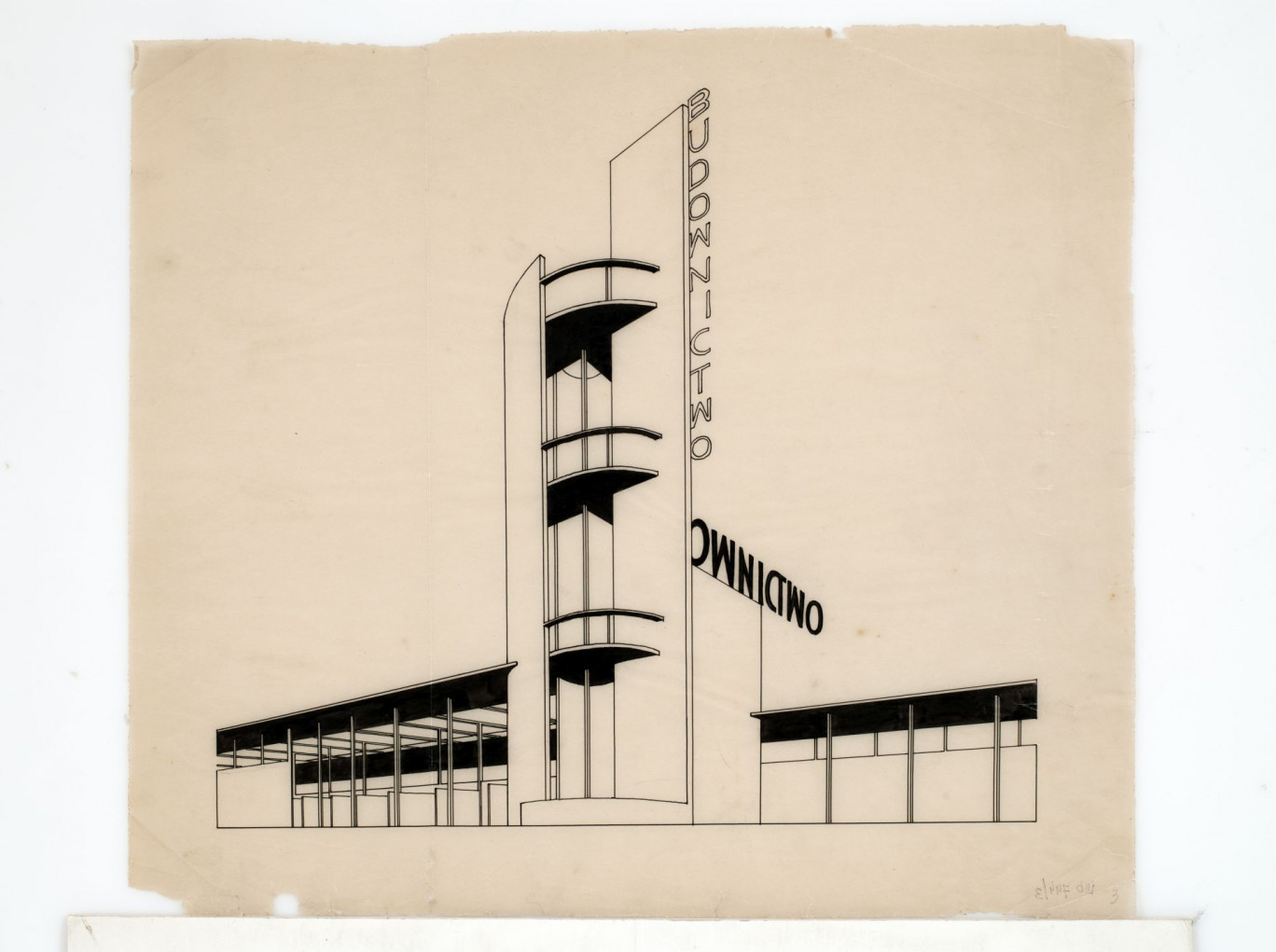Bohdan Lachert
The exhibition presents the works of Bohdan Lachert - one of the most outstanding Polish avant-garde architects, co-creator of the Praesens modernist group, Józef Szanajca’s partner in the architectural studio “Lachert & Szanajca” - the best known duo in the history of modern architecture of the interwar period.
The exhibition was prepared by the Museum of Architecture in Wroclaw in connection with the 30th anniversary of Bohdan Lachert’s death (1900-1987) and the announcement of 2017 as the Year of Avant-Garde.
Bohdan Lachert – an architect and architectural theorist, graduate of the Faculty of Architecture at the Warsaw University of Technology. For more than a decade, he was professionally associated with Józef Szanajca within the framework of the “Lachert & Szanajca” studio that operated in the years 1926-1939 and was well known in terms of its modern way of organization. Bohdan Lachert was a co-founder of the Association of Polish Architects and the Praesens group of modernists that led the artistic search of Polish avant-garde. He worked primarily in Warsaw, but was also involved in the realization of such important modernist undertakings of the Second Polish Republic as the construction of Gdynia and the presentation of Poland abroad. He received the Grand Prix and was awarded the title of Officer of the French Legion of Honor (1939) for the Polish Pavilion, designed for the Paris exhibition “Art and Technology in Contemporary Life” (1937) together with Józef Szanajca. During the occupation, he taught architecture in underground classes and participated in the preparation of theoretical studies of Warsaw’s reconstruction within the framework of the “Conspiracy Five”. Shortly after the war, he was appointed by the Chief Commission for Investigating German Crimes in Poland as an expert to assess the destruction of the capital. He was a director of the Faculty of Architecture and Engineering at the Capital Rebuilding Office and a promoter of experimental construction from concrete rubble (including the PKO building at 124 Marszałkowska Street). Lachert was also the author of the concept of construction Muranów Południowy residential estate on the ruins of the Warsaw ghetto, which was modified and realized by the “Muranów” studio working under his direction after the introduction of socialist realism.Bohdan Lachert was associated with the Faculty of Architecture at the Warsaw University of Technology as a Dean (1950-1954), Head of the Department of Industrial Architecture Design (1945-1960), Associate Professor (1948) and Full Professor (1966). He promoted nearly 100 theses. In 1984, he was honored with the prestigious SARP Award for his “long-standing, continuous creative activity, creation of dozens of works, buildings and complexes of outstanding spatial and functional values, which constitute an important and lasting contribution to the development of Polish architectural thought, and thus to the development of Polish culture.” In addition, his accolades include Officer’s Cross of Polonia Restituta and the honorary award of the municipality of Warsaw. He was the author of the thesis Considerations of some features of architectural creativity (published only in fragments), illustrated with op-art graphics depicting the process of creating architecture. He died on 8th January 1987, and was buried at the Powązki Military Cemetery in Warsaw.
The exhibition is an attempt at the widest-possible presentation of Bohdan Lachert’s multi-faceted artistic accomplishments. The use of previously unknown designs, concepts and studies allows to present not only his achievements from the interwar period, but also postwar works, which - with the exception of the Muranów Południowy estate - are much less known. Throughout his life, including the period after Szanajca’s death in 1939 and the changing working conditions after the end of the war, Lachert remained faithful to the avant-garde assumptions of the artistic duo. Looking at his works without the usual division into pre- and postwar periods shows the artist consistently realizing the ideas of modernism. The titular obverse of Bohdan Lachert’s work is his home, developed in 1928 at 9 Katowicka Street in Warsaw. The reverse is the study atrial home, designed after the war and never completed.Bohadan Lachert’s home in Saska Kepa was one of the first avant-garde buildings in Warsaw. As part of the experiment, it was built of cellolite (foam concrete), the freshly-patented lightweight cellular concrete. It constituted the author’s interpretation of the five principles of modern Le Corbusier architecture and is still referred to in modernist architecture. The interior color, developed nearly two decades before Władysław Strzemiński’s famous Neoplastic Room (1948) and complemented by colorful Lachert’s designer furniture, was part of the artistic dialogue of the international avant-garde. The building formulated one of the spatial codes of modernist architecture, which can be compared with those designed by Walter Gropius at the same time with the Houses for the Bauhaus Teachers in Dessau or the home of Barbara and Stanisław Brukalski in Warsaw.The narrative of the exhibition is built of architectural designs and drawings, which have never been exposed or reproduced in the literature of the subject, archival photographs, mock-ups, sculptures, prototypes and patents of furniture, book covers, as well as Bohdan Lachert’s texts, interviews with the architect and his loved ones, as well as film material. The presentation thus underlines the multifaceted nature of Bohdan Lachert’s work and illuminates the unknown themes of his artistic activity, allowing for broadening the understanding of the role of the architect in the twentieth century.
The presented exhibits come mainly from the collection of the Museum of Architecture in Wroclaw, where most of the architect’s archives are located, as well as from the collection of the National Library, the Institute of Art of the Polish Academy of Sciences, the Warsaw University of Technology, the Archives of Modern Records, the Patent Office of the Republic of Poland, the Museum of the Warsaw University of Technology, the National Digital Archive, the Jewish Historical Institute, the Dutch House Foundation, the Okolska Association and private collections.
